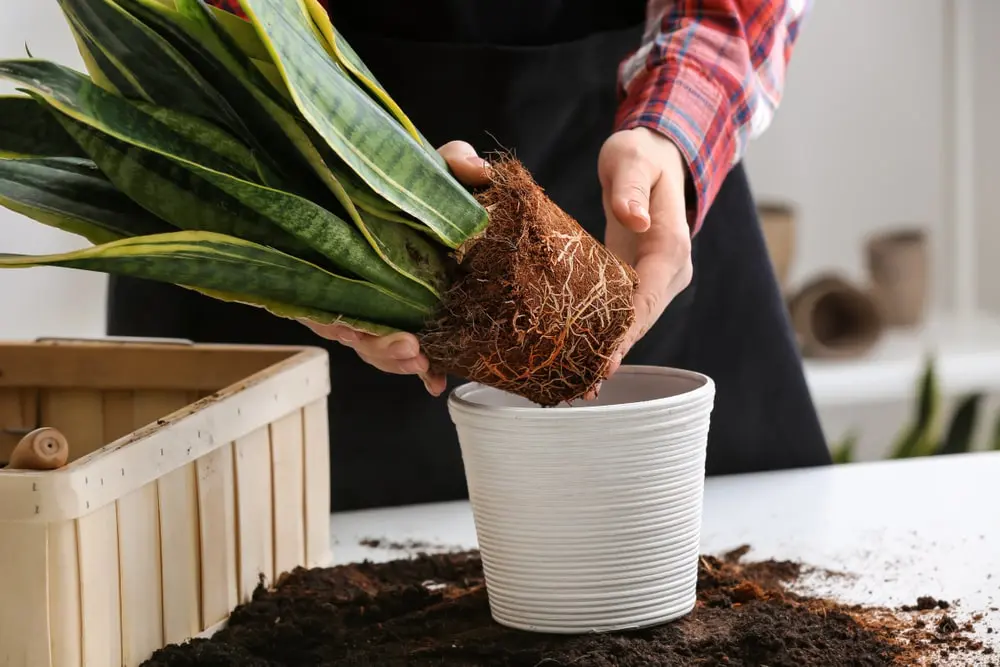
Winter has settled over the Mid-Atlantic, but avid gardeners, take heart—there’s no need to let your green thumb hibernate! As the outdoor gardens rest, this is the perfect season to repot your houseplants, giving them a fresh start and keeping your gardening spirit alive all winter long.
Signs Your Plant Needs Repotting
Not sure if it’s time to repot your plant? Here are some key signs to look for:
- Visible Roots: If roots are peeking out from the surface of the soil or growing out of the drainage holes, your plant has likely outgrown its pot.
- Slowed Growth: Plants that seem to have stalled in their growth may be root-bound, meaning their roots have filled the pot and have nowhere left to expand.
- Coiled Roots: Check the rootball by gently removing the plant from its pot. If the roots are tightly coiled or spiraling around the outside of the soil, it’s a clear signal that your plant needs more space.
Repotting into a slightly larger container with fresh soil will give your plant room to grow and thrive.
When To Repot Plants
The best time to repot many indoor plants is just before their active growing season begins—making winter an ideal time to get started. Repotting now ensures your plants are ready to thrive as spring approaches.
How to Choose a Pot for Repotting Plants
When selecting a pot for your plant, aim for one that complements your home décor and is appropriately sized for your plant’s needs. Avoid going too big—a pot that is only 1-2 inches larger in diameter than the current one is ideal. Oversized pots can retain excess water, leading to root rot.
Make sure the pot has drainage holes to prevent water from pooling in the soil. To protect your floors, choose a saucer that matches the pot and will catch any excess water.
For the best results, use a high-quality potting soil mix with added nutrients. Espoma Organic’s potting soils are an excellent choice for most indoor plants, providing the right balance of nutrients to help them thrive.
At Meadows Farms and The Great Big Greenhouse, we stock an incredible selection of pottery from around the world. With early shipments arriving in winter, this is the perfect time to find the pot that suits your style and your plant’s needs. Our selection is at its best, so don’t wait to check it out!
Tips to Make Repotting Easy
Follow these simple steps for a smooth repotting process:
- Remove the Plant: Gently take the plant out of its current pot. If it’s stuck, slide a knife or trowel around the edges to loosen it.
- Tend to the Roots: If the roots are coiled, gently tease them apart. For plants that are severely root-bound, you may need to prune the roots to encourage healthy growth.
- Prepare the New Pot: Add a layer of fresh potting soil to the bottom of the new pot. Center your plant, then fill in around it with a premium potting mix, leaving space at the top for watering.
- Water Thoroughly: Water the plant to settle the soil and hydrate the roots.
It is not unusual for the plant to go into shock after repotting. Try to keep the plant out of direct sunlight for a few weeks and keep the soil evenly moist while the plant recovers.
Visit The Great Big Greenhouse for All Your Houseplant Needs!
Looking to refresh your indoor garden this winter? Our Great Big Greenhouse location in Richmond, VA is your one-stop shop for everything houseplants! From unique pottery and premium potting soil to a stunning selection of fresh plants, we have everything you need to help your plants thrive this season.
Not sure where to start? Our friendly, knowledgeable team is here to offer expert advice and tips, making repotting and plant care a breeze. Stop by today and discover why we’re Richmond’s go-to destination for all things plants!

